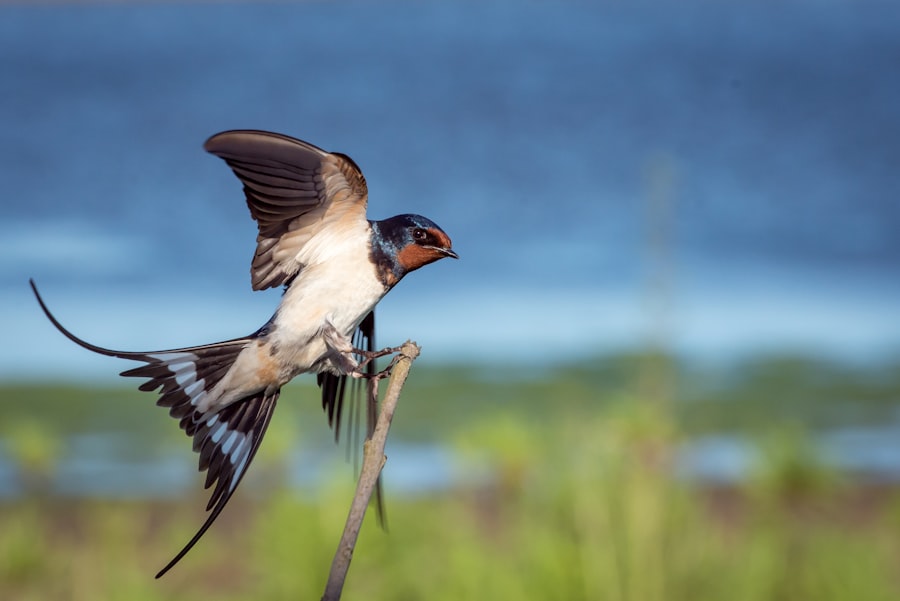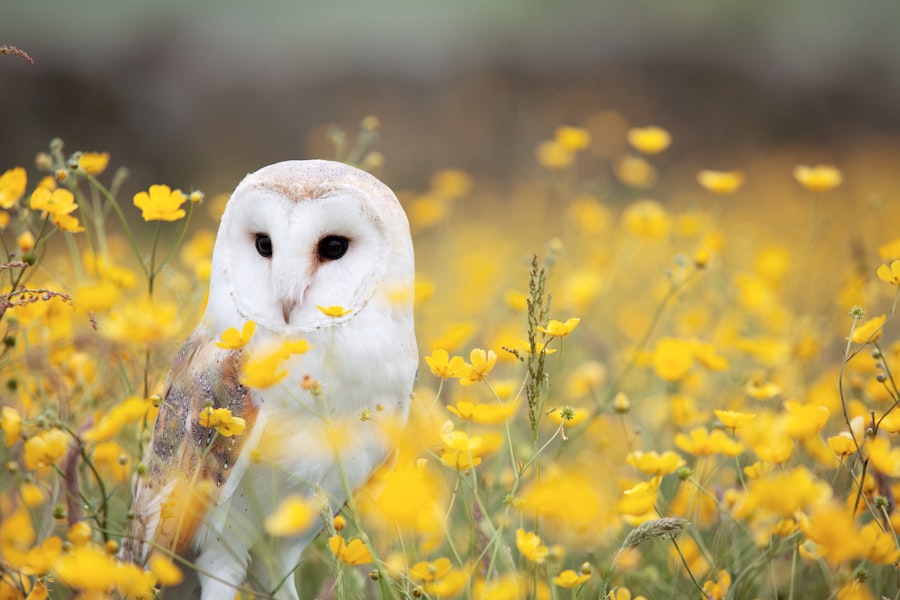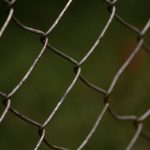Wild birds are integral components of ecosystems, but they can pose challenges for chicken coop owners. Understanding avian behavior is crucial for developing effective deterrent strategies. Birds are primarily attracted to food sources, making this a key consideration when implementing protective measures.
Their high adaptability and intelligence necessitate the use of diverse deterrent methods. Birds possess excellent vision and are sensitive to movement, making visual deterrents particularly effective. By comprehending avian behavior, coop owners can better anticipate and counteract bird intrusions.
It is important to remember that wild birds are acting on survival instincts, so humane deterrent methods should be prioritized. Wild birds are naturally drawn to areas offering food, water, and shelter. Recognizing these instincts is essential for developing strategies to discourage coop entry.
By understanding avian behavior and motivations, chicken owners can implement effective protection measures that safeguard their flock without harming wild birds.
Table of Contents
- 1 Implementing Physical Barriers
- 2 Using Visual Deterrents
- 3 Employing Auditory Deterrents
- 4 Removing Attractive Food Sources
- 5 Creating a Safe and Secure Chicken Coop
- 6 Seeking Professional Help if Necessary
- 7 FAQs
- 7.1 What are some natural ways to keep wild birds away from chickens?
- 7.2 Are there any commercial products available to keep wild birds away from chickens?
- 7.3 Why is it important to keep wild birds away from chickens?
- 7.4 What are some potential risks of wild birds being around chickens?
- 7.5 How can I create a bird-free zone for my chickens?
Key Takeaways
- Wild birds have natural behaviors that can be understood to effectively deter them from chicken coops.
- Physical barriers such as fences and netting can be implemented to keep wild birds away from chicken coops.
- Visual deterrents like scarecrows and reflective objects can help in deterring wild birds from chicken coops.
- Auditory deterrents such as noise-making devices can be employed to keep wild birds away from chicken coops.
- Removing attractive food sources like spilled grains and open garbage cans can discourage wild birds from frequenting chicken coops.
- Creating a safe and secure chicken coop with proper fencing and covering can prevent wild bird intrusion.
- Seeking professional help from pest control experts may be necessary if wild bird infestation becomes uncontrollable.
Implementing Physical Barriers
Physical Barriers: A Effective Deterrent
One effective way to deter wild birds from your chicken coop is by implementing physical barriers. This can include installing wire mesh around the coop to prevent birds from entering, as well as using netting or fencing to create a barrier around the coop. Physical barriers can be particularly effective in keeping larger birds, such as crows or hawks, from accessing your chickens.
Additional Physical Barriers for Smaller Birds
Additionally, using hardware cloth with small openings can prevent smaller birds from entering the coop. Another physical barrier that can be effective is using predator-proofing techniques, such as adding a roof or cover over the coop to prevent birds from swooping down and attacking your chickens. By implementing physical barriers, you can create a secure environment for your chickens and deter wild birds from accessing their food source.
Maintenance and Coop Layout Considerations
It’s important to regularly inspect and maintain these barriers to ensure they remain effective in deterring wild birds. In addition to installing physical barriers, it’s important to also consider the layout of your coop and surrounding area. By strategically placing feeders and water sources away from areas where wild birds congregate, you can reduce the likelihood of them being attracted to your coop.
A Comprehensive Approach to Wild Bird Deterrence
By implementing physical barriers and considering the layout of your coop, you can effectively deter wild birds from accessing your chickens and their food source.
Using Visual Deterrents

Visual deterrents can be an effective way to deter wild birds from your chicken coop. Birds are highly sensitive to movement and visual cues, so using reflective materials or objects that move in the wind can help deter them from entering your coop. One common visual deterrent is using shiny objects, such as aluminum foil strips or reflective tape, which can create a visual disturbance that deters birds from approaching the coop.
Another visual deterrent that can be effective is using scarecrows or decoy predators, such as owls or hawks, to create the illusion of a threat to wild birds. By strategically placing these visual deterrents around your coop, you can create a sense of danger for wild birds and discourage them from approaching the area. Additionally, using visual deterrents that move in the wind, such as pinwheels or windsocks, can create a dynamic and unpredictable environment that deters birds from entering your coop.
It’s important to regularly change the placement and appearance of visual deterrents to prevent wild birds from becoming accustomed to them. By using a variety of visual deterrents and regularly rotating their placement, you can effectively deter wild birds from accessing your chicken coop. Visual deterrents can be a humane and effective way to discourage wild birds from approaching your coop and protect your chickens from potential harm.
Employing Auditory Deterrents
In addition to visual deterrents, employing auditory deterrents can be an effective way to deter wild birds from your chicken coop. Birds are highly sensitive to sound, so using auditory deterrents such as ultrasonic devices or predator calls can create a hostile environment for wild birds and discourage them from approaching the area. Ultrasonic devices emit high-frequency sounds that are unpleasant for birds and can deter them from entering your coop.
Another auditory deterrent that can be effective is using predator calls or distress calls of other bird species to create a sense of danger for wild birds. By strategically placing these auditory deterrents around your coop, you can create a hostile environment that deters birds from approaching the area. Additionally, using a variety of sounds and regularly changing their placement can prevent wild birds from becoming accustomed to the deterrents.
It’s important to consider the impact of auditory deterrents on other wildlife and neighboring properties when employing these methods. By using auditory deterrents responsibly and considering their potential impact on the surrounding environment, you can effectively deter wild birds from accessing your chicken coop. Employing auditory deterrents in conjunction with other methods can create a multi-sensory approach that effectively deters wild birds and protects your chickens from potential harm.
Removing Attractive Food Sources
One effective way to deter wild birds from your chicken coop is by removing attractive food sources that may be drawing them in. This can include securing feeders and ensuring that spilled feed is promptly cleaned up to prevent wild birds from being attracted to the area. Additionally, storing feed in secure containers and keeping it out of reach of wild birds can help reduce their attraction to your coop.
It’s also important to consider other potential food sources that may be attracting wild birds, such as fruit trees or gardens. By taking steps to minimize these attractions, you can reduce the likelihood of wild birds being drawn to your coop. Additionally, regularly cleaning up any fallen fruit or seeds in the surrounding area can help deter wild birds from approaching the coop.
By removing attractive food sources and minimizing potential attractions in the surrounding area, you can effectively deter wild birds from accessing your chicken coop. It’s important to regularly assess the area for potential food sources and take proactive steps to minimize their impact on attracting wild birds. By removing attractive food sources and minimizing potential attractions in the surrounding area, you can effectively deter wild birds from accessing your chicken coop.
Creating a Safe and Secure Chicken Coop

Regular Inspections and Maintenance
Regularly inspecting the coop for any signs of damage or wear and tear can help prevent wild birds from gaining access to your chickens. This includes checking for any holes, gaps, or weak points in the coop’s structure.
Strategic Placement of Feeders and Water Sources
The layout of the coop and surrounding area also plays a significant role in creating a secure environment for your chickens. By strategically placing feeders and water sources away from areas where wild birds congregate, you can reduce the likelihood of them being attracted to your coop.
Considering Other Wildlife Threats
It’s also important to consider the impact of other wildlife on the safety of your chickens when creating a secure coop. By taking proactive steps to secure the coop and minimize potential attractions for wild birds, you can effectively deter them from accessing your chickens. Creating a safe and secure chicken coop is essential in protecting your chickens from potential harm and deterring wild birds from accessing their food source.
Seeking Professional Help if Necessary
If you’re struggling to deter wild birds from your chicken coop despite implementing various methods, it may be necessary to seek professional help. Wildlife experts or pest control professionals can provide valuable insight and assistance in finding effective solutions for deterring wild birds. They can assess the situation and recommend appropriate methods for deterring wild birds while ensuring the safety of your chickens.
Additionally, seeking professional help can provide peace of mind in knowing that you’re taking responsible steps to address the issue of wild birds accessing your chicken coop. Wildlife experts or pest control professionals have the knowledge and experience to effectively address wildlife-related issues while minimizing harm to both wild birds and domestic animals. By seeking professional help if necessary, you can gain valuable insight and assistance in finding effective solutions for deterring wild birds from accessing your chicken coop.
Wildlife experts or pest control professionals have the knowledge and experience to effectively address wildlife-related issues while minimizing harm to both wild birds and domestic animals. If you’re struggling to deter wild birds despite implementing various methods, seeking professional help may be necessary in finding a solution that effectively protects your chickens while ensuring the well-being of wild birds.
If you’re looking for ways to keep wild birds away from your chickens, you may also be interested in learning about the benefits of using a heater for your chicken coop. Check out this article on heater options for a chicken coop to ensure your feathered friends stay warm and safe during the colder months.
FAQs
What are some natural ways to keep wild birds away from chickens?
Some natural ways to keep wild birds away from chickens include using scare tactics such as hanging shiny objects, using predator decoys, and planting dense shrubs or trees to provide cover for the chickens.
Are there any commercial products available to keep wild birds away from chickens?
Yes, there are commercial products available such as bird netting, bird spikes, and sonic bird repellents that can help keep wild birds away from chickens.
Why is it important to keep wild birds away from chickens?
It is important to keep wild birds away from chickens to prevent the spread of diseases such as avian influenza and to reduce the risk of wild birds preying on or competing with the chickens for food.
What are some potential risks of wild birds being around chickens?
Some potential risks of wild birds being around chickens include the spread of diseases, increased stress on the chickens, and potential damage to chicken feed and crops.
How can I create a bird-free zone for my chickens?
You can create a bird-free zone for your chickens by using physical barriers such as bird netting, keeping the chicken feed in enclosed containers, and regularly cleaning up any spilled feed or debris that may attract wild birds.
Meet Walter, the feathered-friend fanatic of Florida! Nestled in the sunshine state, Walter struts through life with his feathered companions, clucking his way to happiness. With a coop that’s fancier than a five-star hotel, he’s the Don Juan of the chicken world. When he’s not teaching his hens to do the cha-cha, you’ll find him in a heated debate with his prized rooster, Sir Clucks-a-Lot. Walter’s poultry passion is no yolk; he’s the sunny-side-up guy you never knew you needed in your flock of friends!







